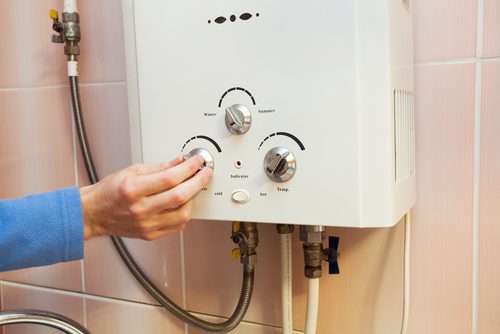Easy Guide to Maintaining Your Home's Hot Water System
Easy Guide to Maintaining Your Home's Hot Water System
Blog Article
We've discovered this post pertaining to How to Maintain a Hot Water Heater in a Few Simple Steps down the page on the net and felt it made good sense to discuss it with you over here.

Warm water is vital for daily convenience, whether it's for a rejuvenating shower or cleaning recipes. To ensure your hot water system runs successfully and lasts longer, normal upkeep is crucial. This short article supplies useful pointers and insights on just how to preserve your home's warm water system to prevent disturbances and costly fixings.
Introduction
Keeping your home's hot water system could seem complicated, however with a few straightforward steps, you can guarantee it operates efficiently for many years ahead. This overview covers every little thing from understanding your warm water system to do it yourself upkeep tips and knowing when to employ specialist aid.
Relevance of Keeping Your Warm Water System
Regular maintenance not just extends the lifespan of your warm water system however additionally guarantees it runs effectively. Disregarding maintenance can bring about lowered efficiency, greater power bills, and also early failure of the system.
Indications Your Hot Water System Requirements Upkeep
Knowing when your hot water system requires focus can avoid significant issues. Watch out for indicators such as irregular water temperature, odd sounds from the heating system, or rustic water.
Recognizing Your Hot Water System
Before diving into maintenance jobs, it's handy to understand the standard components of your hot water system. Usually, this consists of the hot water heater itself, pipelines, anode poles, and temperature level controls.
Regular Monthly Upkeep Tasks
Normal month-to-month checks can aid capture small concerns prior to they escalate.
Flushing the Water Heater
Flushing your water heater removes sediment buildup, improving effectiveness and extending its life.
Monitoring and Changing Anode Rods
Anode rods avoid rust inside the storage tank. Evaluating and changing them when worn is vital.
Evaluating and Readjusting Temperature Level Settings
Changing the temperature level setups ensures optimal efficiency and safety.
DIY Tips for Maintenance
You can execute several upkeep tasks yourself to keep your warm water system in leading problem.
Checking for Leaks
Routinely check pipelines and connections for leakages, as these can result in water damages and greater bills.
Examining Stress Relief Valves
Examining the pressure relief valve ensures it operates appropriately and protects against extreme pressure buildup.
Insulating Pipelines
Shielding warm water pipes reduces heat loss and can conserve power.
When to Call a Professional
While DIY upkeep is valuable, some concerns need professional knowledge.
Complex Concerns Needing Professional Aid
Instances include significant leakages, electrical troubles, or if your water heater is regularly underperforming.
Regular Expert Maintenance Advantages
Professional maintenance can consist of extensive evaluations, tune-ups, and making certain conformity with safety criteria.
Conclusion
Normal maintenance of your home's warm water system is vital for efficiency, long life, and cost financial savings. By following these suggestions and knowing when to look for professional aid, you can guarantee a reliable supply of hot water without unanticipated interruptions.
How to Maintain an Instant Hot Water Heater
Before tinkering with your hot water heater, make sure that it’s not powered on. You also have to turn off the main circuit breaker and shut off the main gas line to prevent accidents. Also turn off the water valves connected to your unit to prevent water from flowing into and out of the appliance. 2. When you’re done, you have to detach the purge valves’ caps. These look like the letter “T†and are situated on either side of the water valves. Doing so will release any pressure that has accumulated inside the valves while at the same time avoid hot water from shooting out and burning your skin. 3. When the purge valves’ caps are removed, you have to connect your hosing lines to the valves. Your unit should have come with three hoses but if it didn’t, you can purchase these things from any hardware or home repair shops. You can also get them from retail stores that sell water heating systems. Read the user’s manual and follow it to complete this task properly. When the hosing lines are connected, open the purge port’s valves. 4. You should never use harsh chemical cleaners or solutions when cleaning your unit. Make use of white vinegar instead. It should be undiluted and you’ll probably use about 2 gallons. 5. Now flush your water heater. This task should probably take about 40 minutes. We can’t give you specific directions for this because the procedure is carried out depending on the type, model and brand of your heater. With that being said, refer to the user’s manual. 6. When you’re done draining the unit, you have to turn off the purge port valves again. Remove the hosing lines that you earlier installed on each of the water valves. Put the valve caps (purge port) back in their respective places and be very careful so as not to damage the rubber discs that are found inside these caps. 7. Now that everything’s back in place, check your user’s manual again to find out how to reactivate your water heating system. 8. Once it is working, turn one of your hot water faucets on just to let air pass through the heater’s water supply pipes. Leave the tap on until water flows smoothly out of it. https://www.orrplumbing.com/blog/2014/september/how-to-maintain-an-instant-hot-water-heater/

We were brought to that write-up about How to Maintain a Hot Water Heater in a Few Simple Steps from someone on a different blog. Enjoyed our article? Please quickly share it. Let someone else discover it. Thanks a lot for taking the time to read it.
Browse Website Report this page